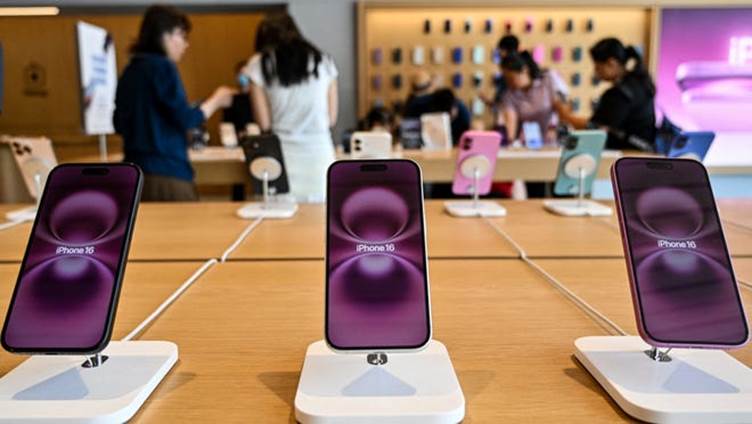1. Frustration with Locked Display Cases
One of the most aggravating aspects of shopping isn’t just the rising prices; it’s finding products locked away behind display cases. Whether you’re out shopping this weekend or any other time, the likelihood of encountering both inflated prices and restricted products is high.

To buy something in a locked case, you often need to press a button to summon help or track down an employee to unlock it. If the wait is too long, I tend to leave and look for another store. This whole process disrupts the shopping experience, making it more of a hassle than a simple transaction.
2. Security Measures and Their Impact
These locked cases aren’t limited to luxury items or electronics. Even basic products like steaks, baby formula, deodorants, and cleaning products are locked away in cages to prevent theft. As a result, consumers are forced to wait for assistance, which delays their shopping and can lead to frustration.
Some people, like my wife, have resorted to shopping at grocery stores outside of their local area simply for a better selection and more relaxed shopping experience. Unfortunately, not everyone has that option, which makes the issue even more widespread.
3. Retail Giants Respond to Rising Theft
Retail giants such as CVS, Walgreens, Walmart, and Target are adopting stronger security measures to deal with the surge in theft. The goal is to prevent criminals from stealing merchandise, but these measures unintentionally frustrate regular customers. Instead of addressing the root causes of theft, these security measures create an additional barrier for legitimate shoppers, resulting in a less enjoyable shopping experience.
4. Rising Prices and Economic Strain
When Donald Trump took office, he promised to reduce inflation and lower the cost of basic goods like food. Yet, after over 100 days in office, his administration’s policies have led to higher prices, especially for lower- and middle-class families. For example, the cost of eggs has skyrocketed, and food prices, in general, continue to climb. Experts predict inflation might reach 4%, exacerbating the strain on consumers.
This surge in prices directly correlates with an increase in retail theft. In 2022, theft-related losses amounted to $112 billion, and the figure is expected to exceed $150 billion by 2026. These rising costs are pushing more people into difficult financial situations, which in turn fuels retail crime.
5. State Budget Cuts and Increased Theft
The situation is set to worsen, as federal funding for critical programs like Medicaid and SNAP (food assistance) continues to be reduced. With fewer resources available to help those in need, more people are turning to theft as a means of survival, especially as their financial security becomes more uncertain.
In these tough economic times, we must acknowledge that these measures, while intended to protect businesses, could backfire by pushing even more people into desperate situations.
6. Personal Experience in Walgreens
During a recent visit to Walgreens, I was shocked by the number of products locked behind security cases. Deodorant, Red Bull, shower gels, dish soap, and even baby formula were all secured behind plastic barriers. When I needed shower gel, I had to press a buzzer, which prompted an announcement over the store’s PA system.
Several minutes later, an employee arrived to help, but it took a while for her to find the right key. Once she unlocked the case, I sampled a few scents before settling on one, but she was rushing me. After I chose my item, she quickly escorted me to the checkout, asking if I intended to buy anything else.
I asked her how often theft happens. Her response was blunt: “All the time.”
7. Retailers’ Dilemma: Sales vs. Security
Walgreens’ CEO, Timothy Wentworth, acknowledged that locking up products does impact sales. When items are locked away, customers can’t easily grab them, leading to missed sales opportunities. However, if stores lock too many products, they risk turning into places that no longer feel like stores at all. Customers may start avoiding these locations altogether.
While Walgreens is reluctant to lock up everything, Walmart has taken the opposite approach. In some locations, steaks are locked in metal cages, sparking outrage among customers. A TikTok video showcasing this practice went viral, with over 2 million views and thousands of angry comments.
8. The Bigger Question: How to Tackle Theft
As retailers struggle to protect their products, the question remains: how far will businesses go to prevent theft? Will more products be locked behind glass? Will additional security guards be hired? Or will stores rely on more surveillance cameras?
While retailers focus on stopping theft, it’s clear that addressing the root causes of theft, such as poverty and inequality, is the more effective approach. Without addressing these fundamental issues, the cycle of theft and over-security will continue to escalate.
9. Political Solutions: What’s Missing?
Unfortunately, I’m not optimistic that our leaders will take meaningful action. In his 2024 campaign, Trump suggested that one “rough hour” of law enforcement would solve the problem of retail theft, but this drastic approach misses the point. More law enforcement alone won’t solve the underlying issues.
Instead of promoting extreme measures, we should focus on systemic change. Raising the minimum wage and ensuring that people earn enough to meet their basic needs would go a long way in addressing the root causes of theft and financial desperation.
10. Minimum Wage and Inflation: A Growing Crisis
Wisconsin, like many states, has a minimum wage of $7.25 an hour—well below what is needed for a living wage, which is approximately $21 per hour. As food prices rise and inflation continues to climb, people on the margins are struggling to make ends meet. The federal minimum wage hasn’t increased in years, leaving many workers in financial distress.
As we face the reality of rising costs and an uncertain economy, it’s clear that the most vulnerable will bear the brunt of these challenges. If we don’t address the underlying economic disparities, we may see even more drastic measures in stores, like locked products or additional security, as retailers try to combat the rising tide of theft.
In conclusion, solving the problem of retail theft requires more than just locking up products. It requires addressing the deeper social and economic issues that drive individuals to steal in the first place. Until that happens, both consumers and retailers will continue to face this ongoing challenge.



